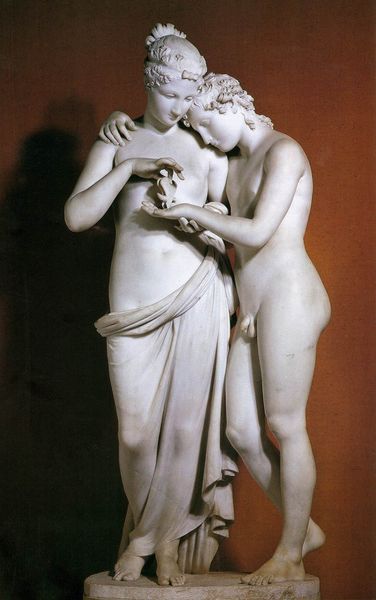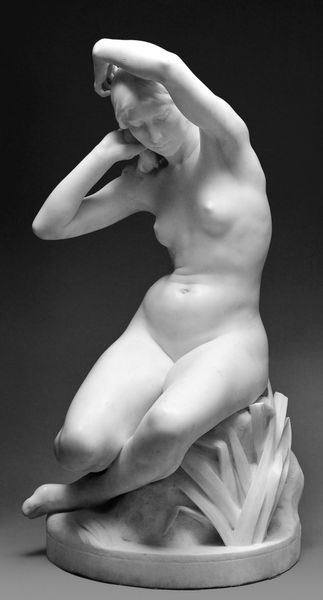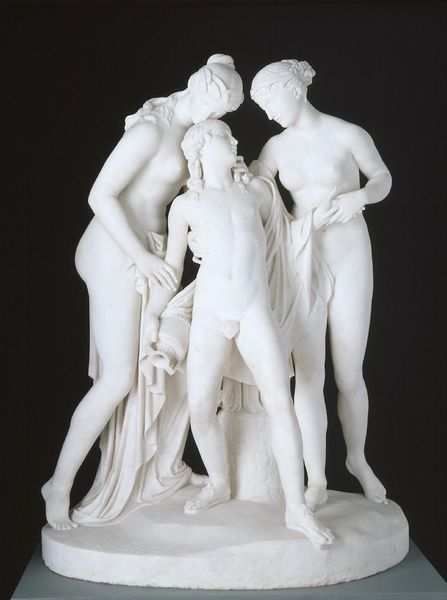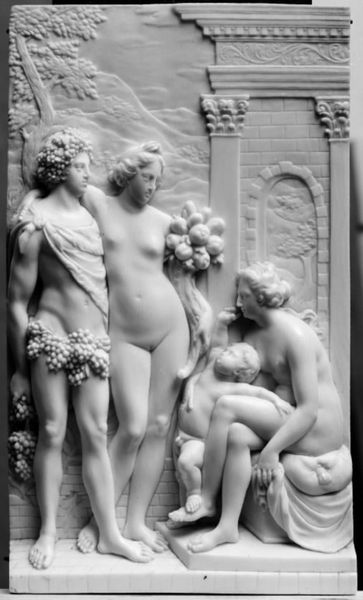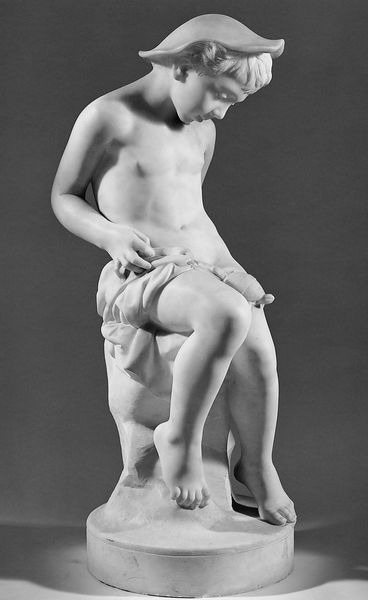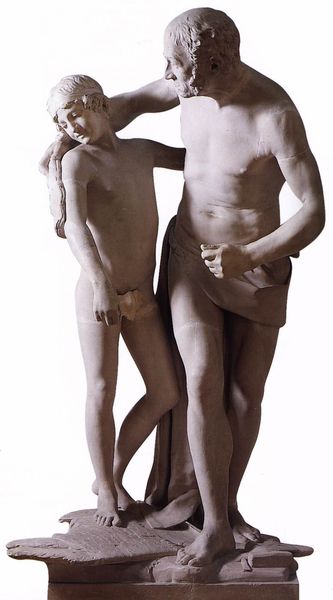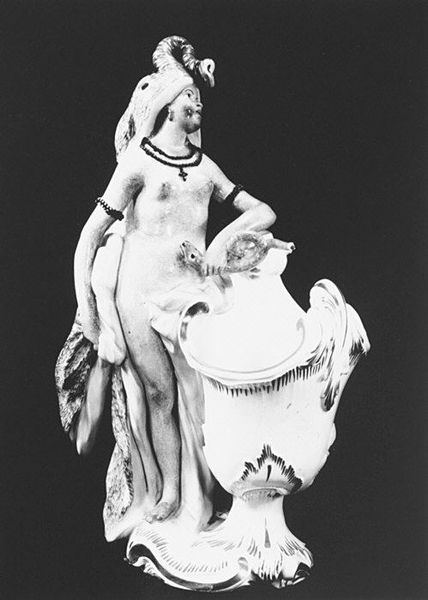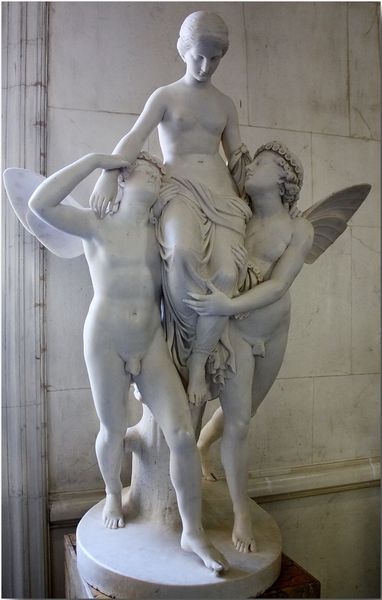
sculpture, marble
#
neoclacissism
#
allegory
#
sculpture
#
greek-and-roman-art
#
classical-realism
#
figuration
#
sculpture
#
black and white
#
mythology
#
monochrome
#
marble
#
nude
#
monochrome
Copyright: Public domain
Antonio Canova sculpted The Three Graces in marble, that most classical of materials, deploying a virtuoso technique. Look closely, and you’ll notice a subtle tension between the cool, hard stone and the soft, pliable forms he evokes. Marble has a strength that allows for extreme refinement, the kind of smooth surfaces and delicate drapery we see here. But it also demands a subtractive process, in which the sculptor progressively removes material. This is slow, careful work. Canova was celebrated in his day as a restorer of ancient ideals. Yet, like all artists, he was also a figure of his time. Neoclassical sculptors like Canova managed large workshops, with many assistants roughing out the initial form. In a sense, these sculptures represent a kind of industrial production, albeit of luxury goods. Next time you see a marble sculpture, consider not just the aesthetic accomplishment, but also the labor and economic systems behind its creation. The relationship between the concept, the hand, and the market is always complex.
Comments
No comments
Be the first to comment and join the conversation on the ultimate creative platform.


